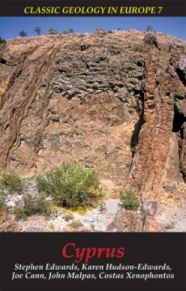By Stephen Edwards, Karen Hudson-Edwards, Joe Cann, John Malpas and Costas Xenophontos

The island of Cyprus is a truly classic area of geology in Europe. Perhaps nowhere else on Earth does so small an area provide such an excellent illustration of the dynamics of Earth processes through abundant exposures of spectacular and diverse geology.
This superb and accessible natural laboratory records at least 200 million years of plate-tectonic activity, particularly the construction, destruction and uplift of parts of the seafloor.
Cyprus: Classic Geology in Europe no 7 explains that the geology, natural resources and climate of Cyprus have enabled civilisations to flourish, and world-renowned archaeological sites date as far back as the Neolithic period. Much of the wealth and development of the island have been based on copper and its exploitation dates to at least the third millennium BC.
Cyprus is also a hazardous island. Modern and ancient settlements have been destroyed or abandoned as a consequence of earthquakes and landslides, the evidence for which is clearly visible in the landscape and ruins.
The book includes a large section on the famous ‘Troodos massif’, which is a complete cross section through the upper mantle and crust of a former ocean basin. A journey through the Troodos brings to life the processes of seafloor spreading, transform faulting, magma migration and crystallisation, mineralization, and submarine hot spring activity. Other topics covered include the famous, colourful jumble of rocks that records the breakup of a former continental margin as a consequence of plate collision.
This new title, written by Stephen Edwards from University College, London, is an excellent edition to the range with 288 pages packed with colour photographs and illustrations.
Cyprus: Classic Geology in Europe no 7, by Stephen Edwards, Karen Hudson-Edwards, Joe Cann, John Malpas and Costas Xenophontos, Dunedin Academic Press, Edinburgh and London (2010), 288 pages (paperback), ISBN: 978-1-903544-15-0


